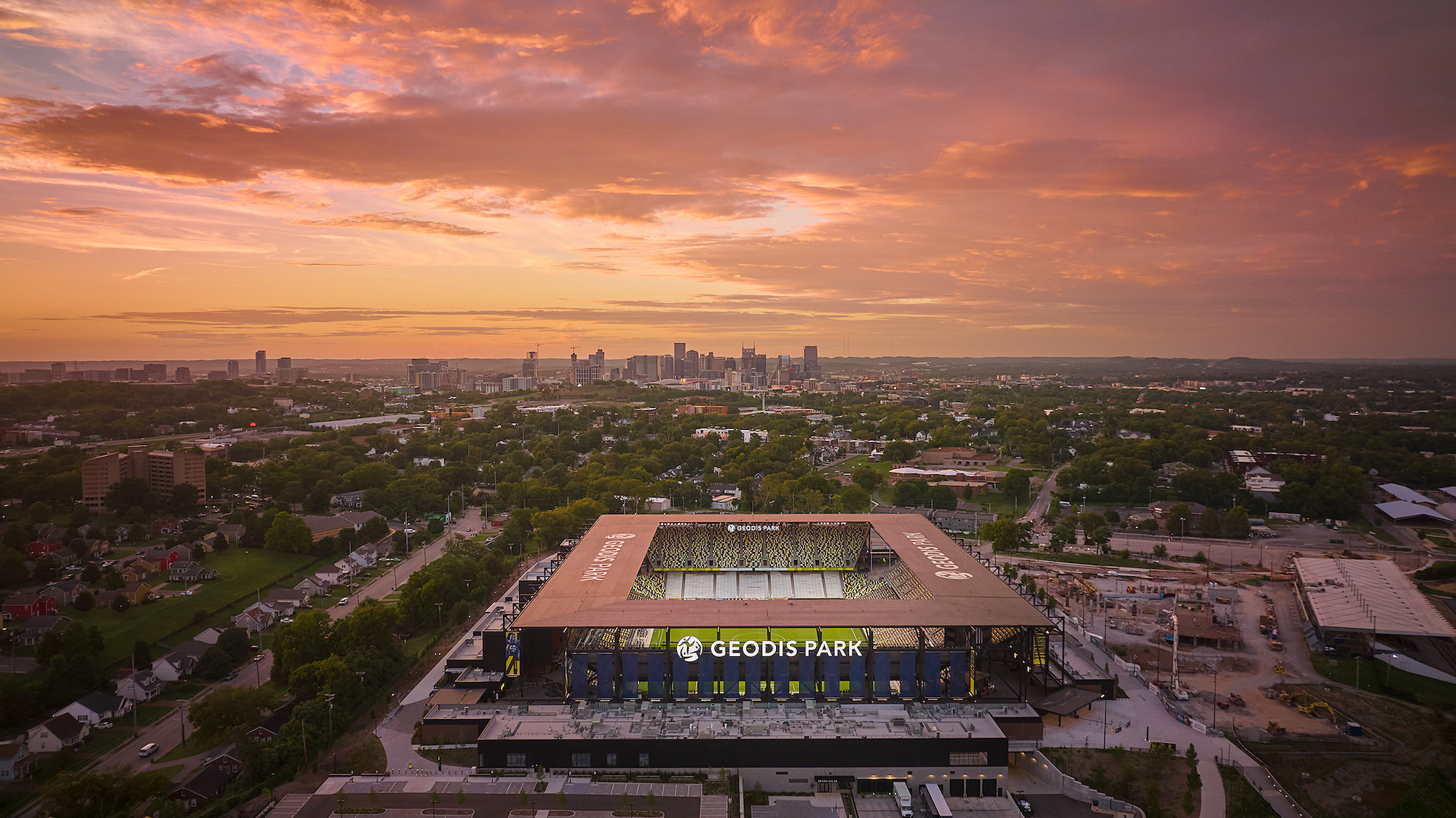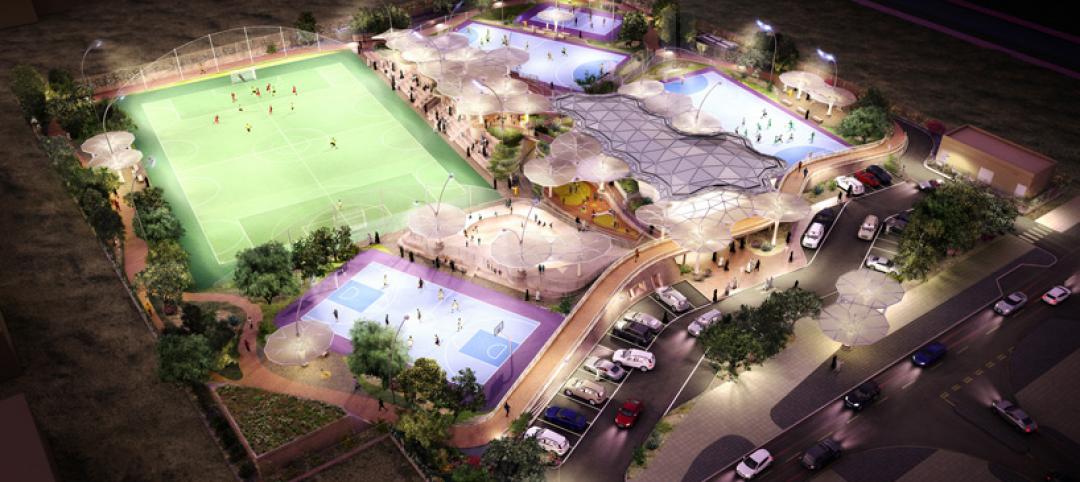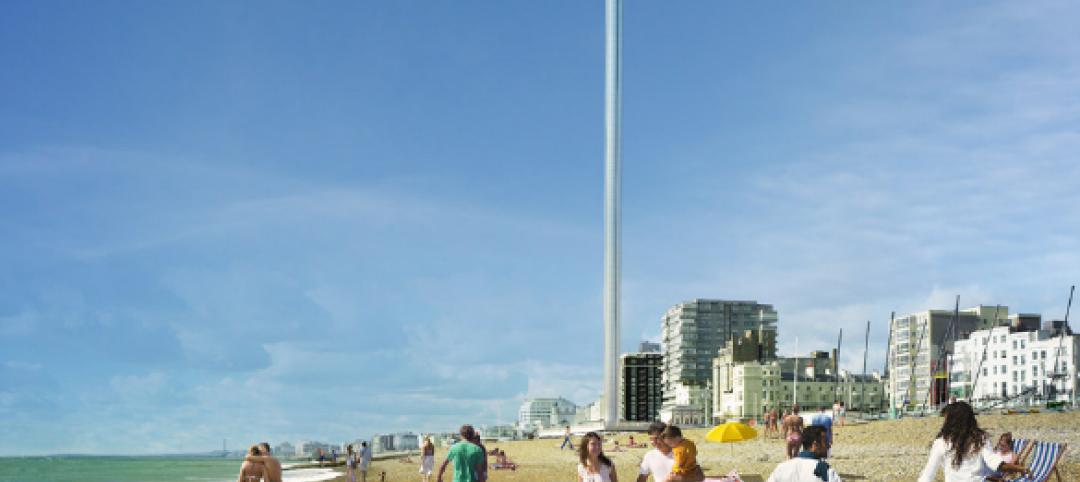At 30,105 seats and 530,000 sf, GEODIS Park, which opened in 2022, is the largest soccer-specific stadium in the U.S. and Canada. Created by design firms Populous and HASTINGS in collaboration with the Metro Nashville Sports Authority, GEODIS Park serves as the home of the Nashville Soccer Club as well as a venue for performances and events.
One mile south of downtown Nashville, GEODIS Park is located in Wedgewood-Houston, a neighborhood with former industrial factories alongside single-family homes. The stadium’s design reflects that history—with both the industrial scale of its high canopy structure and the residential scale of its brick-clad ground-level structures surrounding the concourse.
The open-air venue is protected by a 360-degree canopy. There are just 150 feet of distance between the touchline and the last row of seats, while a dedicated 3,150-sf safe standing supporters’ section provides the closest-possible sightlines to the pitch. A 65-foot-wide shared concourse features a variety of local concessions.

With 65,000-sf of open space surrounding the stadium’s footprint, the venue can be used year round by the community. This area includes a 17,000-sf park with an exterior-facing video board to host away game watch parties as well as community events. Situated within the Nashville Fairgrounds, the concert-ready venue has a capacity of 27,000.
GEODIS Park also offers three clubs: a luxury club experience, another club with a Nashville music-centric theme, and a third that has the feel of a classic sports bar with several televisions.
On the building team:
Owner: Metro Nashville Sports Authority
Owner’s representative: CAA ICON
Design architect: HASTINGS
Architect of record and design architect: Populous
MEP engineer: ME Engineers / DFH Services
Structural engineer: Walter P Moore / Logan Patri Engineering
Construction manager: Mortenson / Messer

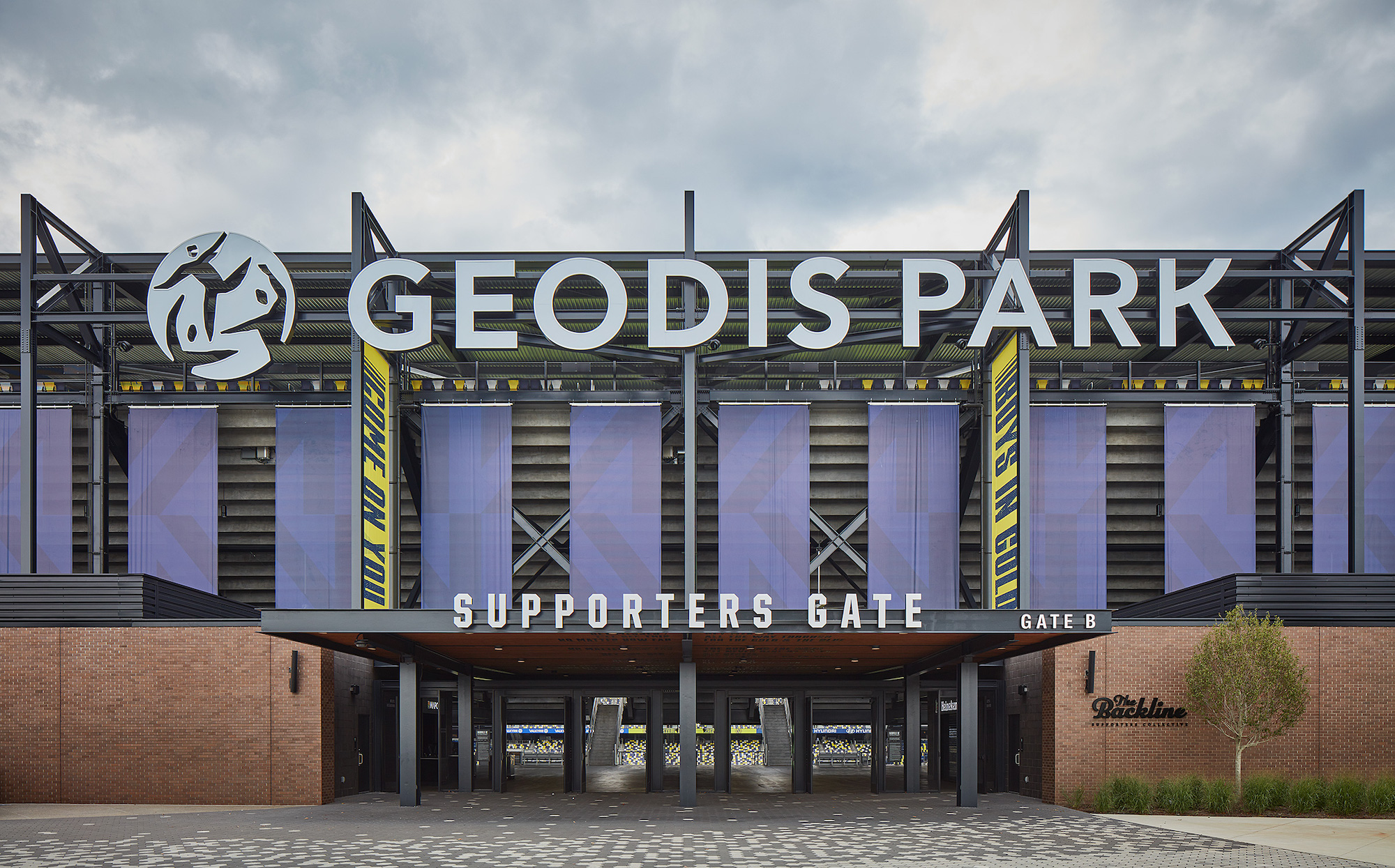
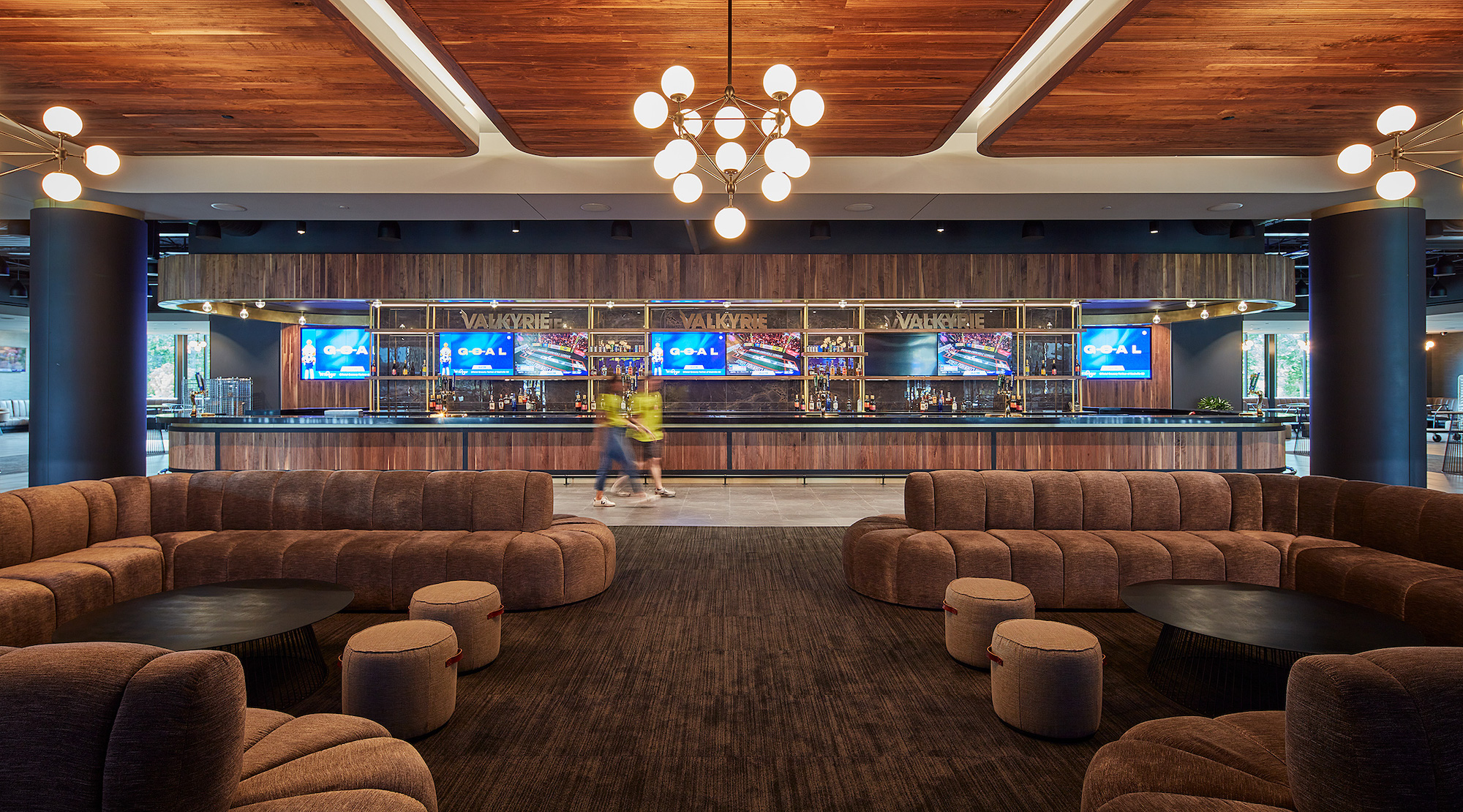
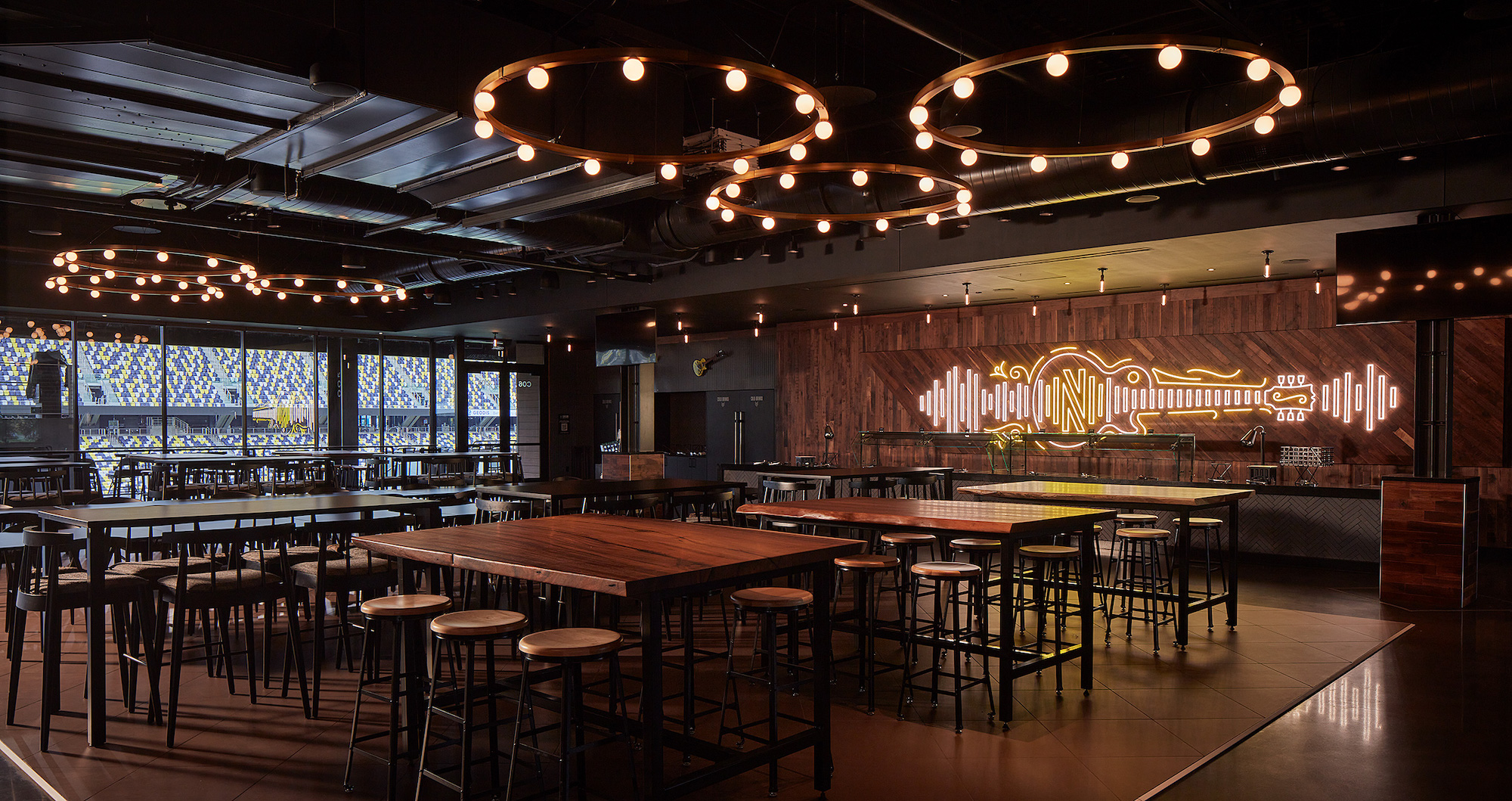

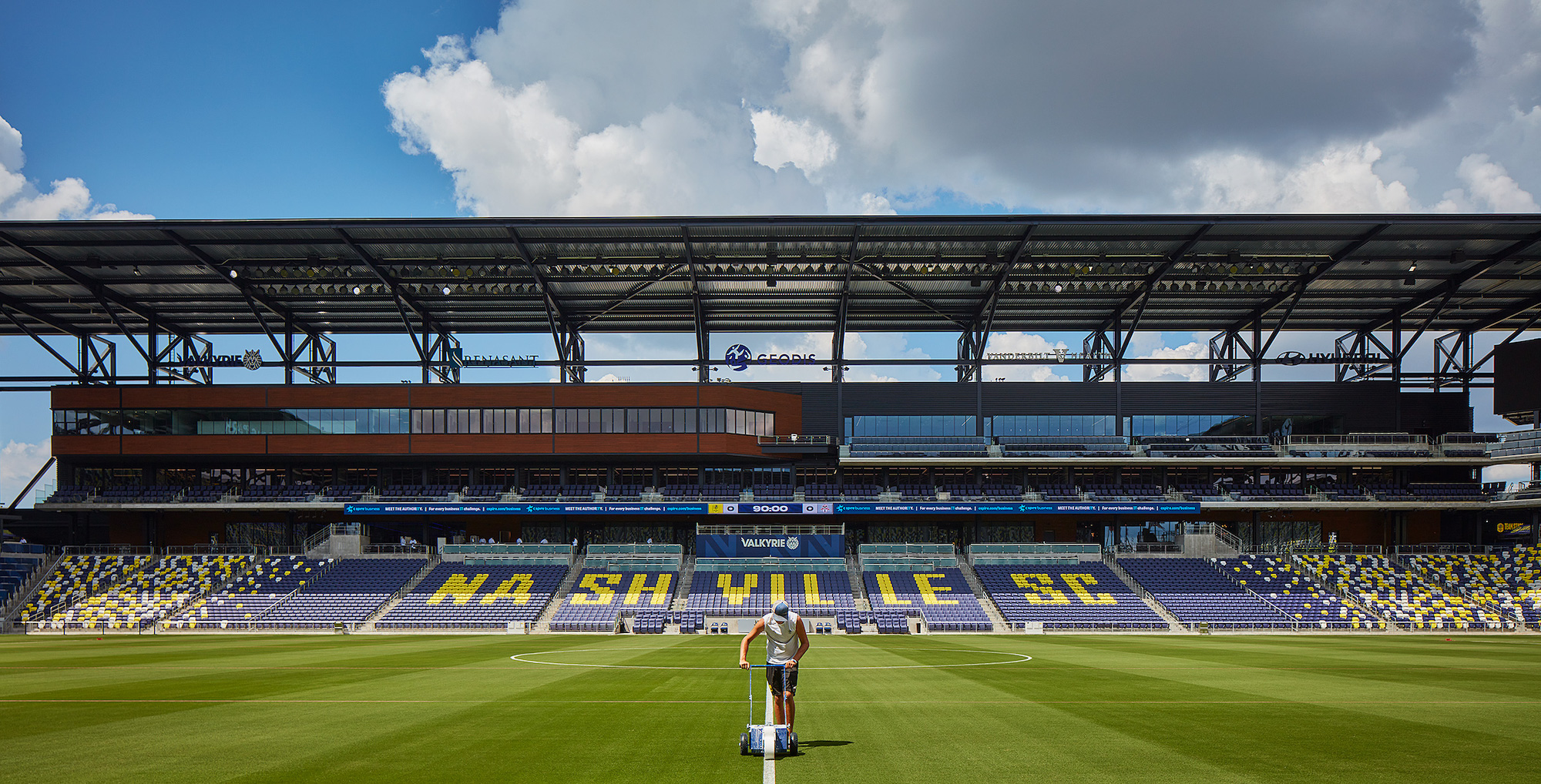


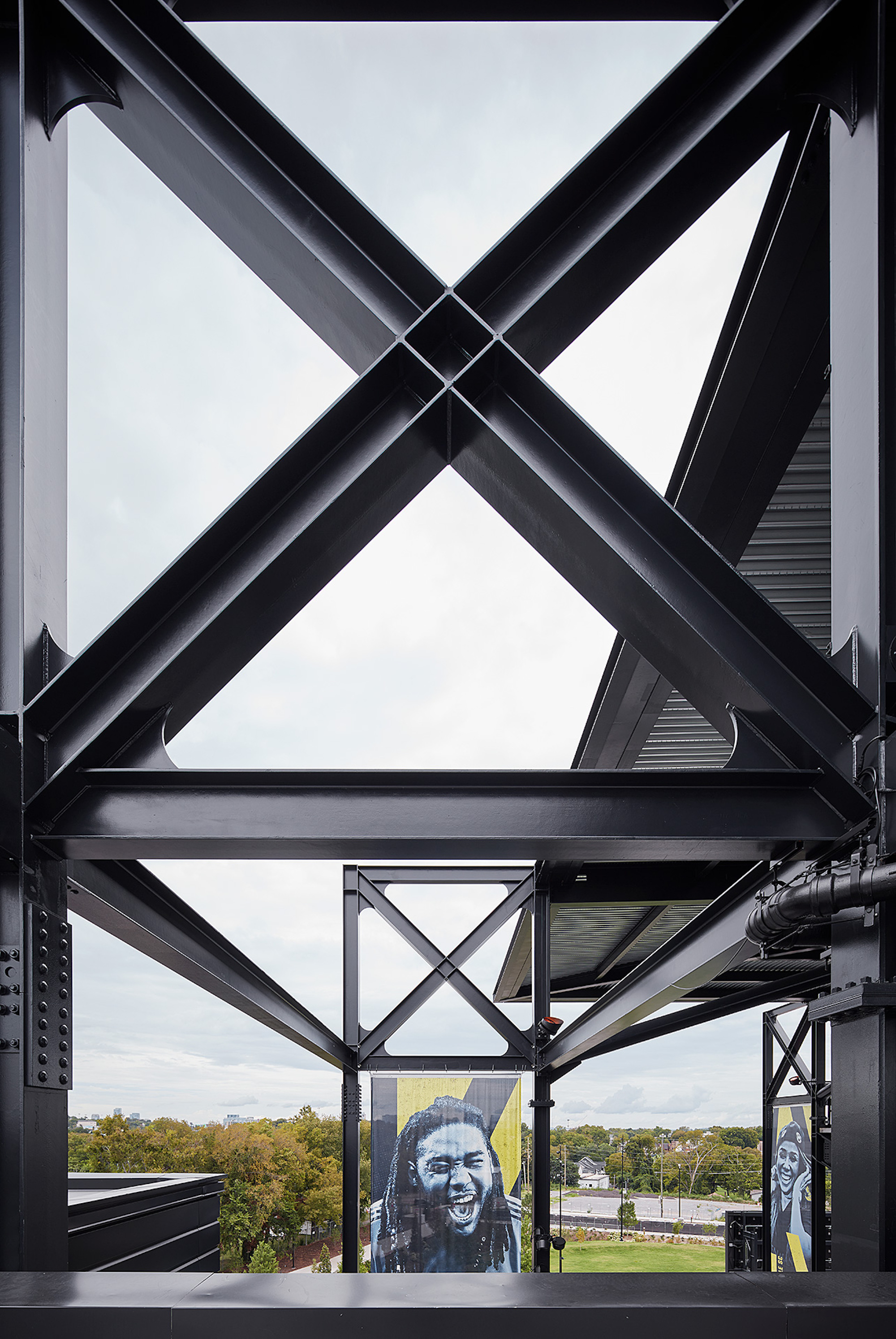
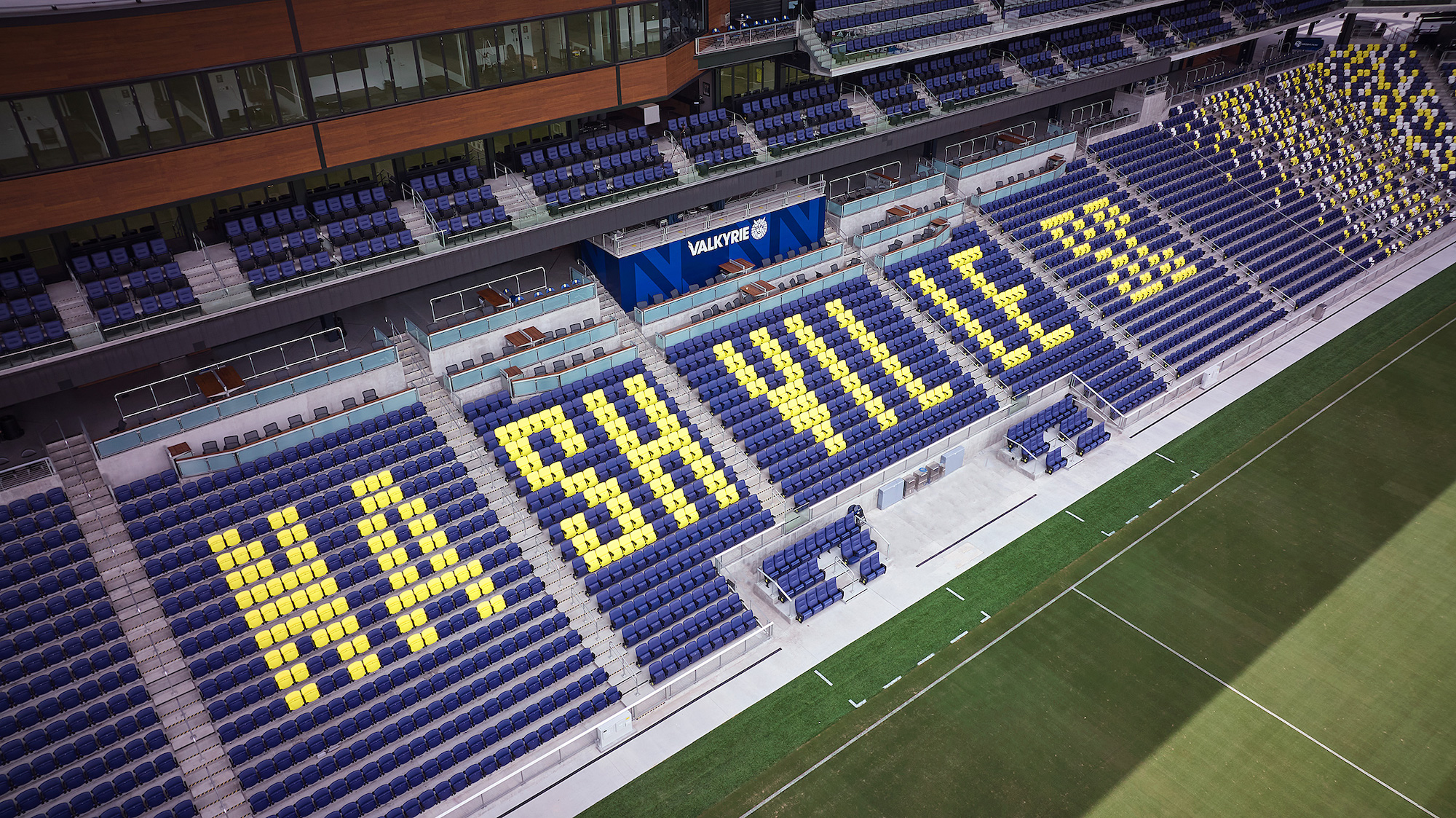
Related Stories
| Jul 2, 2014
Grimshaw's 'kit of parts' design scheme selected for Qatar sports facilities program
The series of projects, called the Al Farjan Recreational Sports Facilities, have been designed in such a way that the same basic design can be adapted to the specific requirements of each site.
| Jul 1, 2014
Sochi's 'kinetic façade' may steal the show at the Winter Olympics
The temporary pavilion for Russian telecom operator MegaFon will be wrapped with a massive digital "pin screen" that will morph into the shape of any face.
| Jun 30, 2014
Philip Johnson’s iconic World's Fair 'Tent of Tomorrow' to receive much needed restoration funding
A neglected Queens landmark that once reflected the "excitement and hopefulness" at the beginning of the Space Age may soon be restored.
| Jun 30, 2014
Research finds continued growth of design-build throughout United States
New research findings indicate that for the first time more than half of projects above $10 million are being completed through design-build project delivery.
| Jun 26, 2014
Plans for Britain’s newest landmark brings in international cooperation
Designers of the London Eye will team up with companies from France, the Netherlands and the United States to construct i360 Brighton, the U.K.'s newest observation tower.
| Jun 25, 2014
Frank Lloyd Wright’s Spring House, Cincinnati’s Union Terminal among 11 Most Endangered Historic Places for 2014
The National Trust for Historic Preservation released its annual list of 11 Most Endangered Historical Sites in the United States for 2014.
| Jun 20, 2014
Sterling Bay pulled on board for Chicago Old Main Post Office project
Sterling Bay Cos. and Bill Davies' International Property Developers North America partner up for a $500 million restoration of Chicago's Old Main Post Office
| Jun 18, 2014
Six World Cup stadiums have achieved LEED certification
In conjunction with the 2014 FIFA World Cup in Brazil, the U.S. Green Building Council (USGBC) announced that six World Cup stadiums have achieved LEED certification, including South America’s largest stadium, Maracanã in Rio de Janeiro.
| Jun 18, 2014
Arup uses 3D printing to fabricate one-of-a-kind structural steel components
The firm's research shows that 3D printing has the potential to reduce costs, cut waste, and slash the carbon footprint of the construction sector.
| Jun 16, 2014
6 U.S. cities at the forefront of innovation districts
A new Brookings Institution study records the emergence of “competitive places that are also cool spaces.”


